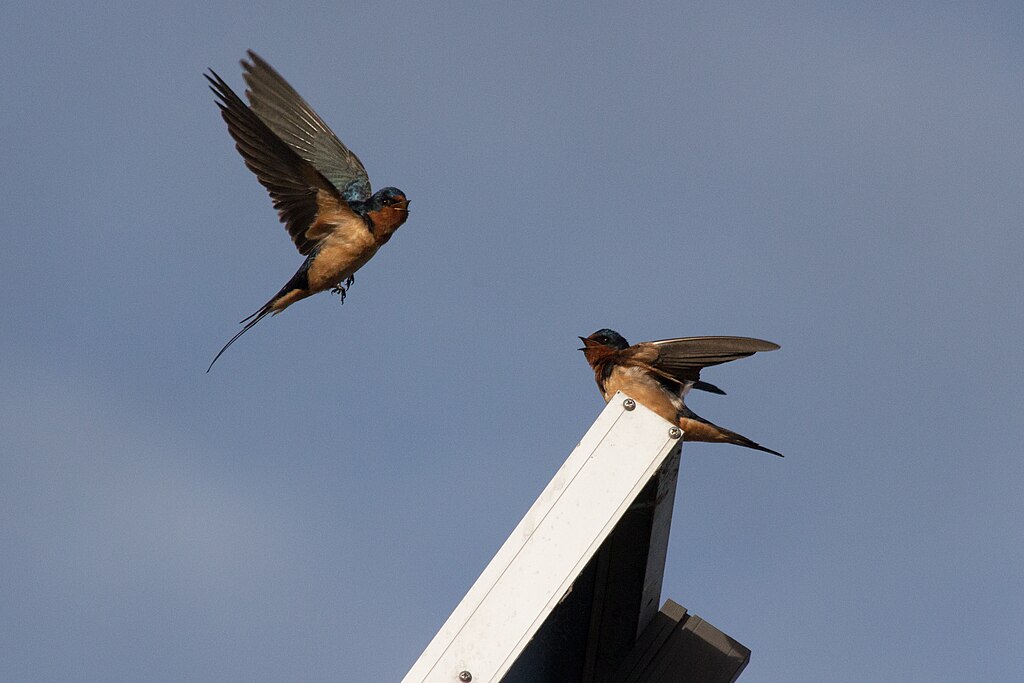A European group of researchers has conducted a study on the impact of solar parks on birds in a Central European agricultural landscape. They surveyed 32 solar park plots and 32 adjacent control plots in Slovakia during a single breeding season.
“We selected ground-mounted photovoltaic power plants with an area of at least 2 hectares,” the researchers explained. “All of the studied solar parks had fixed-tilt solar racks, one of which also had panels mounted on biaxial trackers, and were developed at least eight years earlier. Seventeen solar parks were developed on arable land, and 15 parks were developed on grassland.”
The scientists visited each plot twice, each time surveying it with binoculars for 20 minutes, and recorded all the birds that could be seen or heard. They were then classified according to species, population trends, nesting places, diet, and foraging strata. The plots were also classified for elevation, previous land use, land type, and vegetation management.
Overall, the academic group spotted 353 individuals of 41 species in the solar parks and 271 individuals of 40 species in the control plots. Black redstart, European stonechat, white wagtail, and Eurasian tree sparrow were identified as species most strongly associated with solar parks.
According to the research group, bird species richness, diversity, and invertebrate-eater species richness and abundance were higher in the solar parks than in the control plots. Among the reasons provided by the research group is the food availability for insectivorous birds, as the PV panels attract various species of water-seeking aquatic insects.
“As food availability and accessibility is low in winter, it can be assumed that solar parks can have a positive impact on farmland birds outside the breeding season, as they can serve as stopover, foraging and roosting sites during migration and wintering as the ground under the solar panels can remain snow-free in winter,” the academics explained.
Another possible reason suggested was the higher structural diversity of solar parks.
“We observed that the support structures of the solar panels were used as nesting sites by the black redstart and the white wagtail, the Eurasian tree sparrow nested in the support structures of the panels made of pipes, while the stonechat nested in the uncultivated or extensive vegetation under the solar panels or next to the fence,” the researchers added.
They also stressed that the solar parks considered for the study were designed and managed for renewable electricity production only. “Therefore, it can be assumed that the biodiversity benefits would be even greater if they were managed synergistically with a stronger focus on wildlife,” they concluded.
They presented their analysis in the study “Solar parks can enhance bird diversity in the agricultural landscape,” published in the Journal of Environmental Management. The research was a collaborative work of scientists from Slovakia’s Slovak Academy of Sciences, Gemer-Malohont Museum, Comenius University in Bratislava, Catholic University in Ružomberok, Slovak Ornithological Society/BirdLife Slovakia, and Belgium’s University of Antwerp.
This content is protected by copyright and may not be reused. If you want to cooperate with us and would like to reuse some of our content, please contact: editors@pv-magazine.com.



1 comment
By submitting this form you agree to pv magazine using your data for the purposes of publishing your comment.
Your personal data will only be disclosed or otherwise transmitted to third parties for the purposes of spam filtering or if this is necessary for technical maintenance of the website. Any other transfer to third parties will not take place unless this is justified on the basis of applicable data protection regulations or if pv magazine is legally obliged to do so.
You may revoke this consent at any time with effect for the future, in which case your personal data will be deleted immediately. Otherwise, your data will be deleted if pv magazine has processed your request or the purpose of data storage is fulfilled.
Further information on data privacy can be found in our Data Protection Policy.